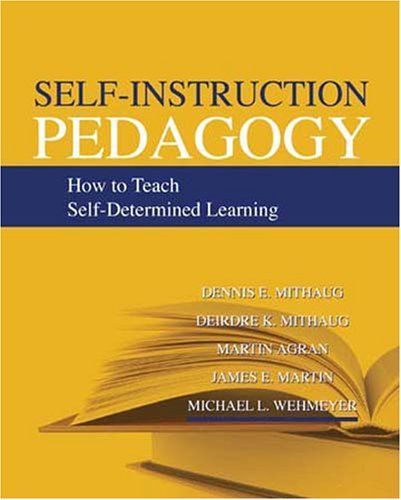
Self-instruction Pedagogy How to Teach Self-determined Learning
This book describes a method of teaching that fosters autonomous learning in all students, including students with disabilities. The pedagogy is based on decades of research on strategy instruction as well as on a theory of learning that claims these four conditions promote self-determined learning in all learners: (1) opportunities to choose expectations for gaining something from a learning challenge, (2) strategies that regulate responses to meet those expectations, (3) comparisons between results and expectations that provoke additional adjustment in expectations and responses, and (4) persistent engagement and adjustment until results match expectations. The pedagogy of self-instruction described in this book anchors these conditions in everyday instruction so students can learn by adjusting to their own expectations. Chapter 1 compares this approach to the teacher-directed methods of direct instruction that require teachers to set expectations for students, control how students respond to them, evaluate the outcomes they produce, and then prescribe adjustments students must make to improve. Chapter 2 provides evidence that too much of special education instruction reflects this teacher-directed approach and as a consequence discourages students from learning how to learn on their own. Chapters 3-6 identify four ways to shift learning control from teachers to students and Chapters 7 and 8 identify the obstacles to achieving this instructional shift in special education. The appendices of the book provide a bibliography of research on self-instruction and direct instruction pedagogies and a validated self-assessment that can evaluate the directedness of your teaching.